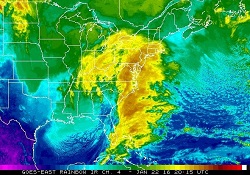 This time last year Cyclone Marcia destroyed 350 homes in Central Queensland (pictures here). This year Cyclone Winston, said to be the strongest ever in the Southern Hemisphere, ripped through Fiji. I think no-one is claiming these cyclones were caused by climate change, although their intensity could be linked.
This time last year Cyclone Marcia destroyed 350 homes in Central Queensland (pictures here). This year Cyclone Winston, said to be the strongest ever in the Southern Hemisphere, ripped through Fiji. I think no-one is claiming these cyclones were caused by climate change, although their intensity could be linked.
In January, however, there was a huge blizzard that dumped record amounts of snow on the east coast of North America. Blizzard Jonas, said to be the fourth largest in history, is being linked to climate change in ways that are quite specific.
Washington Post tells the story, based on a post by Stefan Rahmstorf at RealClimate.
The short story is that melting ice in the North Atlantic is slowing the Gulf Stream (officially the Atlantic Meridional Overturning Circulation, or AMOC), making the water off the northeast coast of the USA warmer. High snowfall amounts are linked to the exceptionally warm sea surface temperatures off the east coast, caused by the slowing AMOC.
So let’s take that a bit more slowly.
This is what the AMOC looks like:
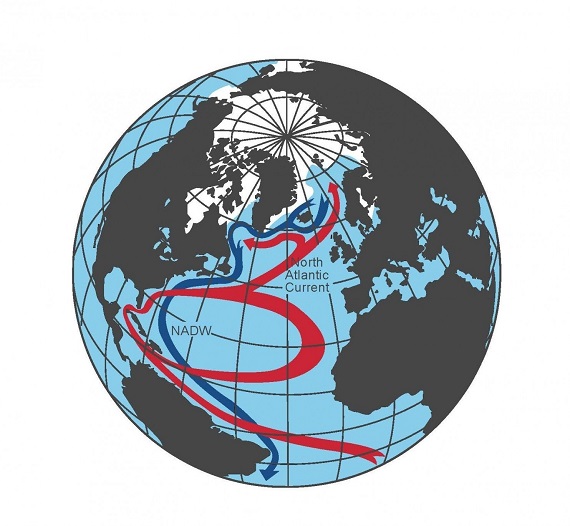
The red is the warm surface current, while the blue shows the southward return of cooler deeper water.
Normally the water becomes saltier and hence denser as it goes, until it sinks in the North Atlantic, providing the engine for the AMOC, drawing the warm surface water northward and pushing the deep colder water southward. The Greenland melt is producing quantities of fresh water, barely above freezing point, cooling the surface temperature. Being less salty and hence less dense, the water sinks more slowly. The surface cooling showed up as a distinct blob on the NASA record of 2015 temperatures:
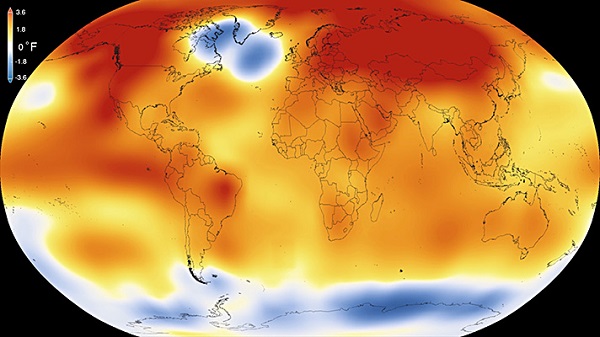
But as the AMOC weakens, the Gulf Stream shifts northward, carrying warm and salty water toward the US coast. The warm water washes into the Gulf of Maine, then some of it flows back southward on the surface along the coast toward New Jersey and Maryland.
This NOAA image of the temperature anomaly for Sunday, January 24, 2016 shows the pattern quite distinctly:
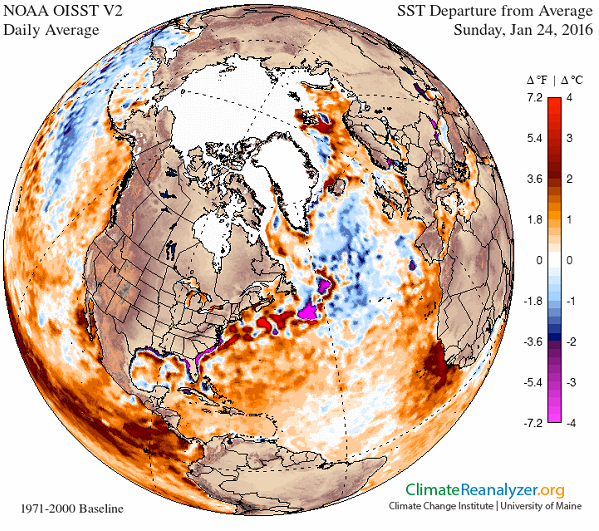
Apparently the ocean off the US east coast warms “nearly three times faster than the global average”, providing the conditions for such severe storms.
The case for climate change induced severe storms of this kind is not proven, but the pieces seem to fit.
This is what Jonas looked like on 22 January:
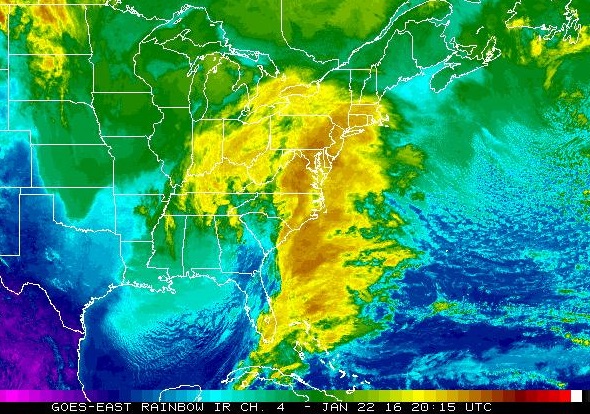
Joe Romm at Climate Progress posted in January 2015 on the more general issue of global warming and extreme weather, drawing attention to a weaker and wobblier jet stream thought to be associated with Arctic warming.
He also cites a study by the insurer Munich Re which found that weather-related natural catastrophes had increased by nearly three times in the past 30 years, while they found only a slight increase in geophysical (earthquake, volcano, tsunami) events.
Here in Oz apart from weather events there has been a focus on bushfire risk, where, according to the Climate Institute:
- The CSIRO and Bureau of Meteorology have found a statistically significant increase in the occurrence and severity of bushfire weather in over 42 per cent of the parts of southern Australia measured since 1973.
The number of high risk days could double again by 2100.
As you’d expect, there is more at the Climate Council.

Thanks for that. So that’s the north-west Atlantic – think of the fun-and-games on the edge of the north-east Atlantic. Gulf of Bothnia and other parts of the Baltic frozen rock-solid for much of the year …. and ice-skating on the Thames back in fashion.
Whilst we, here in the Lucky Country, crack 50 degrees several times each year.
Interesting times ahead.
Graham, if the Gulf Stream stops entirely it will freeze over on the eastern side, but I suspect it won’t. It seems that the northern parts of Europe and Asia are warming strongly, and may continue to do so.
In the Lucky Country, yes, we are going to have more hot days and more strings of them.
Lucky us!